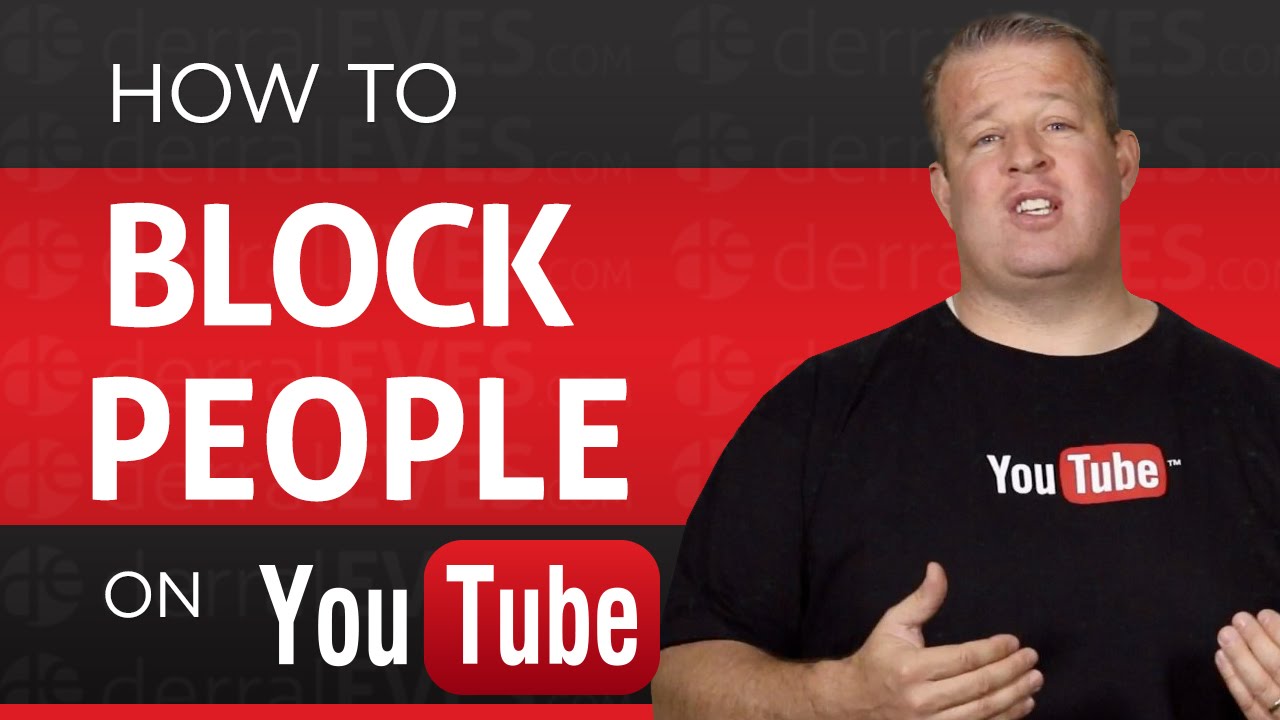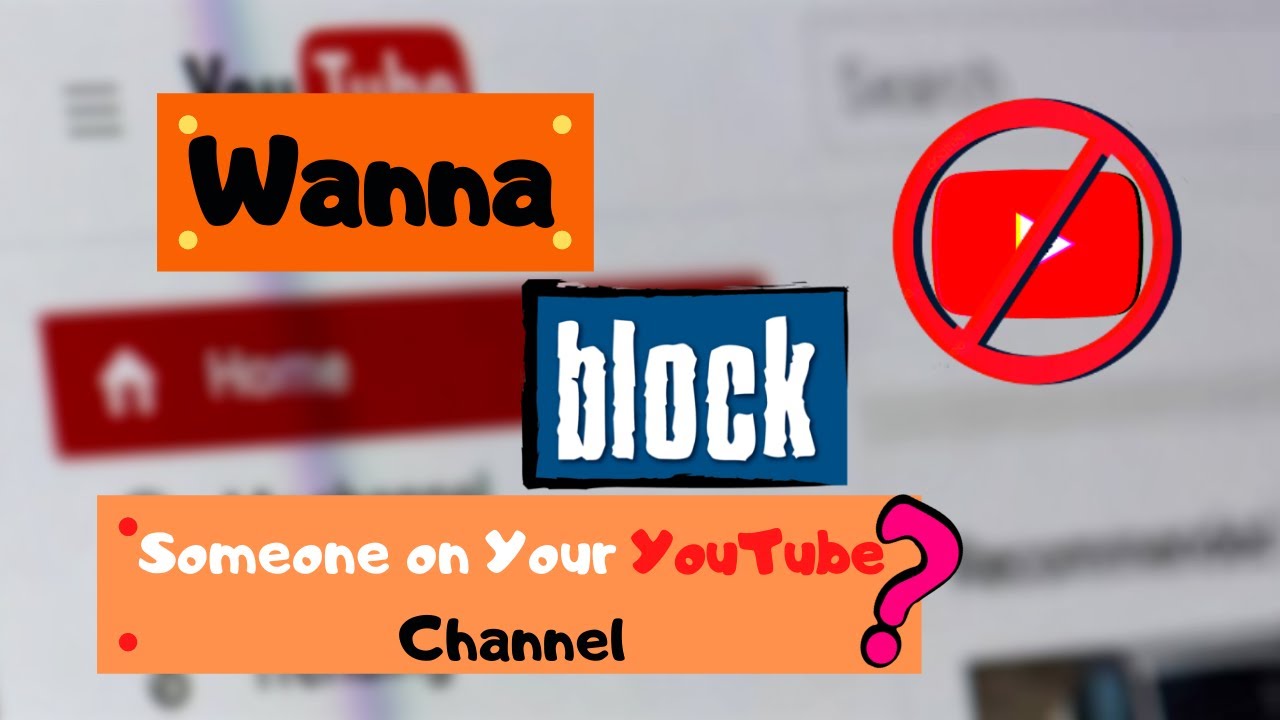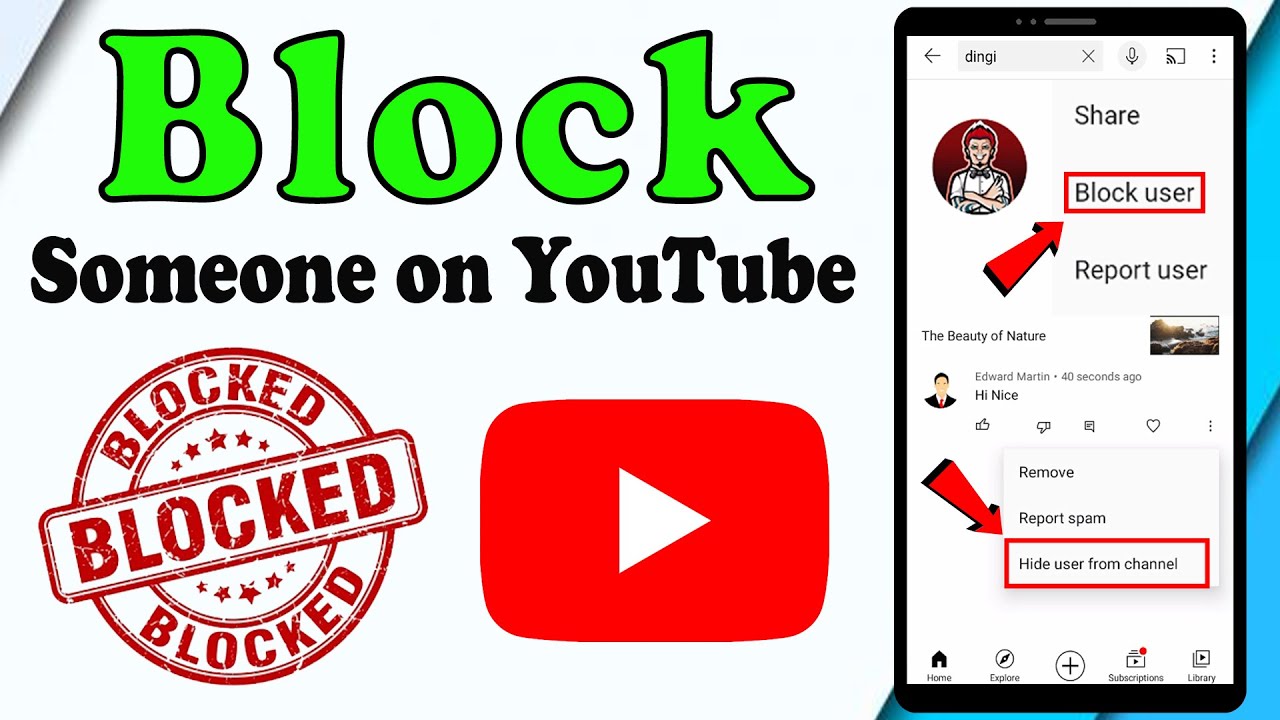Managing a YouTube channel can be a rewarding experience, but it also comes with its fair share of challenges. One of those challenges is dealing with disruptive users. Whether they're leaving negative comments, spamming, or engaging in harassment, knowing how to effectively ban someone from your channel can help maintain a positive community. In this post, we'll explore the reasons why you might need to ban users and how to do it effectively.
Understanding the Need to Ban Users

As a content creator, your primary goal is to foster a welcoming and engaging environment for your audience. However, not every viewer will contribute positively to that atmosphere. Here are some common reasons why you might consider banning someone from your YouTube channel:
- Harassment: If a user is consistently making offensive or abusive comments towards you or other viewers, it's crucial to protect your community. Harassment can lead to a toxic environment that drives away loyal subscribers.
- Spam: Spammy comments, such as repeated promotions for unrelated content or excessive links, can clutter your comment section and distract from genuine discussions.
- Inappropriate Content: Comments that violate YouTube’s community guidelines—such as hate speech or explicit content—should not be tolerated in your community.
- Negative Influence: Sometimes, a user’s persistent negativity can overshadow the positive interactions of the community, leading to a decline in overall engagement and morale.
It's essential to remember that banning a user isn't just about silencing them; it's about protecting the integrity of your channel and ensuring that your audience feels safe and valued. Here are a few considerations to keep in mind when deciding on a ban:
- Evaluate the Situation: Before taking action, assess whether the user’s behavior is a one-time occurrence or a pattern. This can help you decide whether a warning might suffice.
- Consider the Impact: Think about how the user’s behavior affects your channel. If it leads to more negativity and discourages positive engagement, it may be time to take action.
- Review YouTube’s Policies: Familiarize yourself with YouTube’s community guidelines to ensure that your reasons for banning align with their policies. This can help you defend your actions if questioned.
Ultimately, banning users is a necessary tool for maintaining a healthy online community. By understanding the reasons behind your decision and the impact it can have, you can create a more positive space for everyone involved. In the next section, we'll discuss the steps you can take to ban users effectively and how to do so thoughtfully.
Also Read This: How Much Is 50 Gifted Members on YouTube? Understanding the Cost and Impact of Gifted Memberships on YouTube
3. Steps to Ban a User from Your YouTube Channel

Banning a user from your YouTube channel is a straightforward process, but it's essential to follow the right steps to ensure that the user won't be able to comment or interact with your content anymore. Here’s how you can do it:
- Sign In to Your YouTube Account: First things first, make sure you’re logged into the YouTube account associated with the channel you want to manage. You can do this through a desktop or mobile device.
- Go to YouTube Studio: Click on your profile icon in the top right corner and select YouTube Studio from the dropdown menu. This will take you to your dashboard, where you manage your channel's settings.
- Navigate to the Community Section: On the left-hand menu, find and click on Settings. In the settings window, click on Community. This section is where you can manage comments, moderators, and blocked users.
- Ban the User: In the Blocked Users section, you’ll see an option to add users to your ban list. Here, you simply need to input the user’s channel name or their email address associated with their YouTube account. Once entered, click Submit to permanently ban them.
- Confirm the Ban: Finally, ensure that the user you banned appears in the blocked users' list. This is your confirmation that the user is now banned from commenting on your videos.
And voilà! You’ve successfully banned a user from your YouTube channel. You can repeat this process for any other users that you want to restrict. It’s a great way to maintain a positive environment on your channel and keep unwanted negativity at bay.
Also Read This: Can You Get MASN on YouTube TV? Sports Availability Explained
4. How to Verify the Ban is in Effect

After you've banned a user, it’s crucial to check if the ban is indeed in effect. Here’s how you can do that:
- Review Recent Comments: One of the easiest ways to verify is to look at your recent video comments. If the user has previously commented, their comments should now be missing. If you see their comments are absent, it’s a good indication that the ban is active.
- Test with a Friend: If you’re unsure, ask a friend to check if they can see the banned user’s comments on your videos. Sometimes, the user may have multiple accounts, so this step can help ensure that the ban is effective.
- Use YouTube Studio Analytics: In YouTube Studio, you can also check your comments section for any flagged comments. If the banned user attempts to comment, it may be held for review or not show up at all.
- Engage with the Community: Stay active in your comments section and encourage your community to report any negative behavior. If someone indicates that the banned user is still causing trouble, it’s time to reassess and potentially take further action.
- Regularly Update Your Block List: Periodically check your blocked users list to ensure it's up-to-date. Sometimes users create new accounts or change their behavior, so staying vigilant helps keep your channel a safe space.
By following these steps, you can easily verify that the ban is effective, allowing you to focus on nurturing a positive community on your YouTube channel. Remember, maintaining a respectful environment not only enhances viewer experience but also encourages more engagement from your loyal subscribers!
Also Read This: Cómo Habilitar YouTube en Tu Dispositivo y Acceder a Todo el Contenido
5. Alternative Actions: Blocking and Reporting

Sometimes, banning someone from your YouTube channel might not be enough—or it might not even be the best course of action. Fortunately, YouTube offers several alternative actions, such as blocking and reporting, to help you manage your channel's community effectively.
Blocking a user prevents them from commenting on your videos or interacting with your content altogether. This is a useful step if you repeatedly encounter a troll or someone who consistently disrupts your community. To block a user:
- Go to the comment section of one of your videos.
- Find a comment from the user you wish to block.
- Click on the three dots next to their comment.
- Select "Block User" from the dropdown menu.
This will stop that user from commenting on your videos, but they can still view your content. If you think they might pose a bigger issue, you can also report them for inappropriate behavior.
Reporting a user is essential when their actions violate YouTube's community guidelines, such as harassment, hate speech, or spam. Here’s how to report someone:
- Click on the three dots next to the comment you want to report.
- Select "Report."
- Follow the prompts to specify the reason for your report.
Reporting not only helps your channel but also protects the entire YouTube community by alerting the platform to negative behaviors. Remember, though, that misuse of the reporting feature can lead to consequences for your own channel, so use it wisely!
6. Preventing Future Issues with Your Channel
Once you've dealt with a problematic user, your focus should shift to preventing future issues. Here are a few strategies to maintain a positive environment on your channel:
- Set Clear Guidelines: Establishing community guidelines is crucial. Be clear about what kind of behavior you expect from your viewers. Post these guidelines in your video descriptions or channel "About" section.
- Moderate Comments: Take advantage of YouTube’s comment moderation tools. You can hold potentially inappropriate comments for review or even set up filters to automatically block certain keywords.
- Engage with Your Community: Foster a positive atmosphere by actively engaging with your audience. Respond to comments, acknowledge feedback, and make them feel valued. A connected community is less likely to engage in negative behavior.
- Utilize Bots and Moderators: Consider using bots like Nightbot or assigning trusted moderators to help manage comments during live streams. They can help keep things in check and enforce your community guidelines.
By taking these proactive steps, you can create a welcoming space for your audience and reduce the likelihood of encountering future issues. Remember, building a healthy channel takes time, but your efforts will pay off in the long run!
 admin
admin








